Ági & Matt


Things To Do
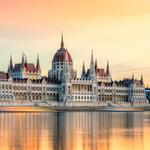
Hungarian Parliament Building
Hungary’s Parliament Building was built in 1902 and is the third largest parliament building in the world. Standing on the banks of the river Danube, in Pest, it’s an impressive edifice built in the Gothic Revival style and is worth visiting both for its stunning architecture and political significance. Tours of the building’s interior are available in a number of languages, while outside there’s a recently renovated square and a monument to the victims of the 1956 revolution in Hungary.
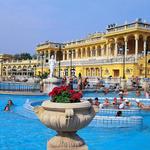
Széchenyi Thermal Bath
Thanks to its abundance of thermal baths, Budapest has earned the nickname ‘City of Spas’. There are many great baths in the Hungarian capital, but Széchenyi gets our vote for its stunning architecture and open-air bathing: visitors can relax in two outdoor thermal pools, surrounded by neo-Baroque and neo-Renaissance architecture.
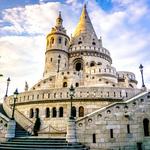
Fisherman's Bastion
A fairytale castle on the Buda side of the city, the Fisherman’s Bastion is a lookout point affording stunning panoramic views across the Danube towards the Hungarian Parliament Building and Pest. Built in 1902, in the neo-Gothic and neo-Romanesque styles, it’s an incredibly photogenic part of the city and is free to visit.
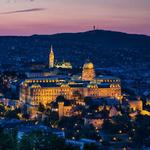
Buda Castle
A UNESCO World Heritage Site, the construction of Buda Castle first began in the 13th century, and since then the building has undergone a number of architectural changes. Today, it’s a combination of the medieval, Baroque, Baroque Revival and modernist styles, and its grounds provide an impressive lookout point over Pest. It’s also home to the Hungarian National Gallery, an art museum showcasing local artists.
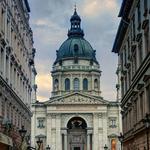
St. Stephen's Basilica
Along with the Hungarian Parliament Building, St Stephen’s Basilica claims the title as the tallest building in Budapest, standing at 96 meters tall. Construction was completed in 1905, with the Roman Catholic Basilica built in the neoclassical style. Its interior is free to visit (donations are welcomed), while its central dome is home to a panoramic lookout point which is well worth the small fee.
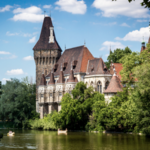
Vajdahunyad Castle
Our favorite romantic spot, and also the location of our engagement photo shoot. Today, it’s one of Budapest’s most popular sights; however, at the time of its construction, it was intended simply as part of the Millennial Exhibition held in the city in 1896. Built from cardboard and wood and designed by Ignác Alpár, the castle featured replicas of buildings throughout the Kingdom of Hungary. It was converted into stone during the early 1900s and now plays host to a number of festivals and events, as well as being home to the Hungarian Agricultural Museum.
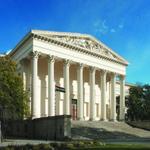
Hungarian National Museum
The Hungarian National Museum houses the nation’s most important collection of historical relics in an impressive neoclassical building, purpose built in 1847. Exhibits on the 1st floor trace the history of the Carpathian Basin from earliest times to the arrival of the Magyars in the 9th century; the ongoing story of the Magyar people resumes on the 2nd floor, from the conquest of the basin to the end of communism.
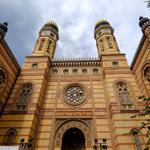
Dohány Street Synagogue
Europe’s largest synagogue (and the world’s second largest), The Great Synagogue was built in the Moorish Revival style in 1859. During WWII, the building suffered damage and misuse; it wasn’t until the 1990s that it would be restored to its former glory. Within the Synagogue’s complex, visitors will find the Jewish Cemetery – the resting place of thousands who died during the Holocaust – and the Raoul Wallenberg Memorial Park, dedicated to the Swedish diplomat who worked to save thousands from Nazi and Arrow Cross persecution.
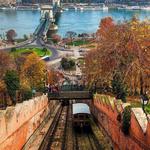
Budapest Castle Hill Funicular
This funicular, which first opened in 1870, is the second oldest funicular of its kind in the world. A system of weights and counterweights is used to help to raise the carriages up and down the hill. The funicular is the fastest way to get to the top of Castle Hill, and is exceedingly popular because of its panoramic views out across the Danube. The speed of ascent was actually slowed down as of 1988, to give passengers more time to enjoy their ride. The track is open daily until 10pm, so it is also a great way to enjoy views of Pest at night.
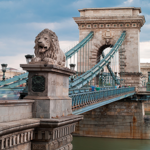
Széchenyi Chain Bridge
The first permanent bridge to connect Buda and Pest, the Chain Bridge is known for its historical significance and beautiful architecture. A footpath allows pedestrians to walk across the suspension bridge, enjoying views over the Danube, while stone lions at either end are one of the monument’s defining features.

Heroes' Square
This large square at the end of Andrássy Avenue is known for its commanding statues of the Seven Chieftains of the Magyars, and is also the location of the Tomb of the Unknown Soldier. On either side of the square stand two of Budapest’s best art museums: the Museum of Fine Arts, and the Mücsarnok.
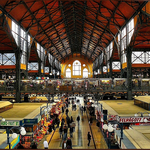
Central Market Hall
The Great Market Hall in central Budapest is Budapest’s most famous marketplace. Whilst many locals still use the market hall as a place to buy their groceries, the market is incredibly popular with the tourists too. Locally grown fruits and veg, and locally sourced meats are found on the lower floors, and souvenirs including lace, chess sets and leather goods are available in the upper floors. As well as individual ingredients, it is possible to pick up homemade local delicacies like goulash and langos from the food stall upstairs.

House of Terror
The House of Terror holds exhibitions about the successive Fascist and Communist regimes which ruled Hungary during the 20th Century. The building itself was the former headquarters of the Fascist Arrow Cross party, and the building was subsequently used as a prison and torture venue by the State Security services of Hungary. There is the opportunity to tour some of the prison area in the basement. The exhibition includes information about both regimes, as well as testimonials from some of the victims. As well as exhibitions about the fascist and communist “security services”, the building often houses other temporary exhibitions.
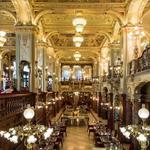
New York Palace Café
Budapest is home to some historically grand cafés, and the New York Café is one of the most opulent. In its heyday, the café was frequented by writers, artists and intellectuals; today, it’s more popular with visitors to the city. Prices match the ultra-luxurious setting, so visit for a coffee and soak up the fresco adorned, gold-plated surroundings.
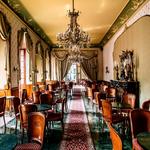
Café Gerbeaud
Located in the heart of Budapest, the legendary Gerbeaud is one of the biggest and most traditional cafés in the city. The café was established in 1858 and was expanded by its late owner, Emile Gerbeaud, a Swiss confectioner, when he bought the store in 1884. Café Gerbeaud is also known as Queen Sissi's favorite café.
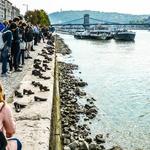
Shoes on the Danube Bank
A heartbreaking memorial to 3,500 people killed by fascists in Budapest during the Second World War. This poignant sculpture, made up of 60 pairs of cast iron shoes designed by Can Togay and Gyula Pauer on the banks of the Danube, commemorates the slaying of 3,500 civilians – including 800 Jews – killed by Arrow Cross militiamen in Budapest. The victims were ordered to remove their shoes by the fascist group, before being shot, their dead bodies falling into the river.

Hospital in the Rock - Bunker
Under Buda Castle Hill runs a network of tunnels and caves. During WWII, they served as an air raid shelter and as part of this, an emergency hospital was created. As well as treating both soldiers and civilians, it was also enhanced to withstand a nuclear attack. Today, the Hospital in the Rock is a fascinating museum allowing an insight into some of the country’s most turbulent times.
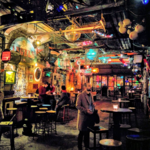
Ruin Pubs - Szimpla Kert
Found in old, dilapidated buildings previously destined for ruin, Budapest’s ruin pubs make use of derelict spaces to create unique places to eat and drink. There are plenty of great ruin pubs across the city; however, if you visit only one, make it Szimpla Kert. Widely seen as the founder of the ruin pub movement, it’s a quirky bar with interesting, unique decorations.
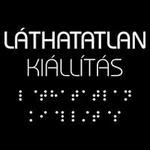
Invisible Exhibition
The Invisible Exhibition aims to give visitors the chance to experience what life is like for people who are completely blind. A registered blind guide will take you on a tour through various different artificially created environments (garden, supermarket, bar etc) which are in completely dark rooms.

Rózsavölgyi Chocolaterie
This is a unique chocolate place with excellent chocolate meticulously made. The desserts themselves are made in a workshop in Budapest. The concepts behind the tastes are driven by innovation and exclusivity and this reflects in the prices as well; this is the best chocolate around that your money can buy. They are excellent gifts to bring home as well.
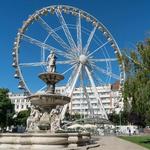
Budapest Eye
Ride one of the world’s largest traveling Ferris wheel standing over 200 feet tall with 42 cars. Every night the Budapest Eye Ferris wheel lights up the square with over 10,000 colored lights. No matter if you ride day or night the Ferris wheel has excellent views to offer. Operating daily in Erzsébet Square.